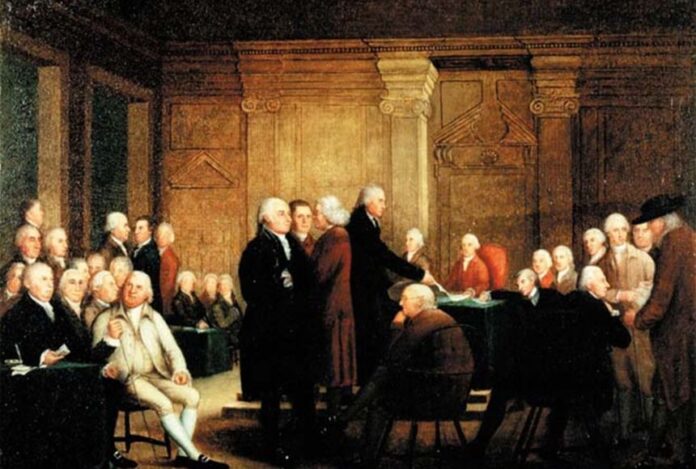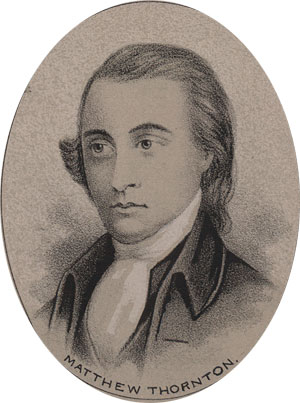
THERE’S little doubt that three-year-old Matthew Thornton had no idea the impact he would have on the shape of modern democracy when he first set off for the Americas from his native Limerick with his family.
But when he grew up, the Limerick man, physician, judge, and soldier found himself in the historic position of signing one of seminal documents of modern statehood: the Declaration of Independence.
Today (July 4), millions of people across the USA will celebrate the official adoption of the Declaration of Independence as a symbol of their freedom. And one Limerick-born gentleman had his own part to play in that document’s history.
Matthew’s early life was not an easy one. Shortly after he settled in Wiscasset, Maine, having made the journey from Limerick with his parents – James Thornton and Elizabeth Malone – his home was burned to the ground in a raid by Native Americans, forcing them to resettle in Worcester, Massachusetts, where he would study medicine at the nearby town of Leicester.
Soon after he would set up his own medical practice in the town of Londonderry, Newhampshire, in 1740.
Establishing himself as a member of the landowning elite, a young Thornton used the profits from his practice to climb the ranks of American society.
In 1775, at a time when revolutionary fervor was beginning to become inflamed in the prospective United States, after delivering a rousing speech concerning England’s policies towards America, he was elected the first president of the Provincial Assembly and chairman of the Committee of Safety.

As war grew close, such committees allowed patriots to infiltrate the colonial bureaucracy and establish an independent shadow government separate from royal British officials. Prior to the establishment of independent states and their respective constitutions, committees of safety passed laws, handed down regulations, and enacted statutes on behalf of the budding government.
In 1776, Thornton was elected to the second Continental Congress. This is how he found himself in such a privileged position to be called to sign the Declaration.
As one of the last of 56 men to sign the document, Matthew Thorton put pen to paper on the Declaration of Independence on November 4, 1776, the same day he took his seat as a New Hampshire delegate in congress – a seat he earned on the back of his work fighting in the American Revolution.
It has also been speculated that a signatory of the US Constitution and a founding father of the US, Thomas Fitzsimons, was born in Limerick. At the very least, his wife’s family, the Meades, were Limerick natives.
For more inspiring and impressive stories of Limerick and its high achieving citizens, visit limerickslife.com, curated by award-winning historian Sharon Slater.


